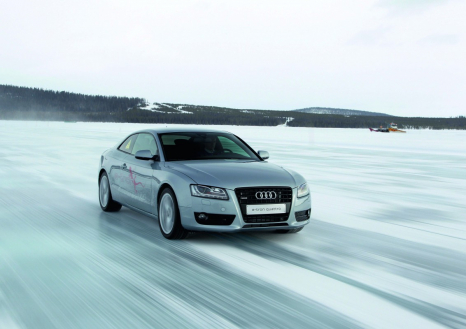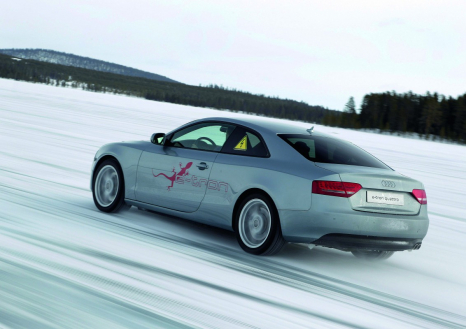e-tron technology
The term e-tron covers all Audi cars that can drive for longer distances on electricity alone. The brand is working on all aspects of the issue and with different approaches – from pure electric drive through plug-in hybrids to the electric quattro driveline.
The Audi R8 e-tron, the first low-volume electric vehicle to be produced by Audi, is an uncompromising, high-performance sports car. Its two electric motors deliver an output of 280 kW (381 hp) and 820 Nm of torque. All of the energy comes from the large lithium-ion battery that stores 48.6 kWh. The Audi R8 e-tron completes the sprint from zero to 100 km/h in 4.6 seconds, achieves an electronically limited top speed of 200 km/h and covers a range of around 215 km.
The Audi A2 concept technology study is also a purely electric car. The spacious four-seater brings together the e-tron philosophy and ultra-lightweight design with the networking ideas of Audi connect; steering and braking are operated purely electrically (by-wire). The show car is prepared for the convenient inductive charging technology known as Audi wireless charging (AWC).
The Audi A3 e-tron concept, on the other hand, is conceived as an efficient parallel plug-in hybrid. Its 1.4 TFSI delivers 155 kW (211 hp), while the electric motor produces 20 kW, with both drives connected to the front wheels. With its capacity of 12 kWh, the lithium-ion battery offers a range of around 50 km in electric drive mode. The Audi A3 e-tron will enter series production as a plug-in hybrid in 2014, followed a little later by the Q7 and A4. Early 2012 also saw Audi present the Audi A6 L e-tron concept as a study.
An interesting alternative to the parallel hybrid concept is to divide the power of the engine and electric drive between the axles. The e-tron quattro study based on the Audi A5 adheres to this principle. Two powerful electric motors complement the 2.0 TFSI at the front of the vehicle – one is attached to the front axle and the other to the rear. As a plug-in hybrid concept, the Audi e-tron quattro can be charged at a household power outlet.
The dynamic Audi e-tron Spyder is also a plug-in hybrid, albeit with a different approach. Its powerful heart is a three-liter, bi-turbocharged TDI with a power output of 221 kW (300 hp). Mounted behind the passenger cabin, it drives the rear wheels. Two electric motors with a combined output of 64 kW (87 hp) and 352 Nm of torque send their drive to the front wheels.
The LMP1 prototype R18 e-tron quattro, which was the confident victor of the 24 Hours of Le Mans, has a largely similar construction. A mid-mounted V6 TDI with a displacement of 3.7 liters sends 375 kW (510 hp) to the rear wheels. The front wheels can be periodically and for a short time driven electrically with 75 kW (102 hp) each. The energy for this drive, which is recuperated from braking, comes from a flywheel energy storage
device.
The compact A1 e-tron, on the other hand, is an urban specialist with an additional range extender. Its electric motor sends a peak output of 75 kW (102 hp) to the front wheels and ist range in electric mode is around 50 km. A Wankel rotary engine in the rear with a displacement of 254 cm³ and 15 kW (20 hp) facilitates cross-country trips by charging the 12 kWh battery via a generator.
Status: 2012

